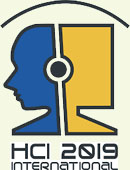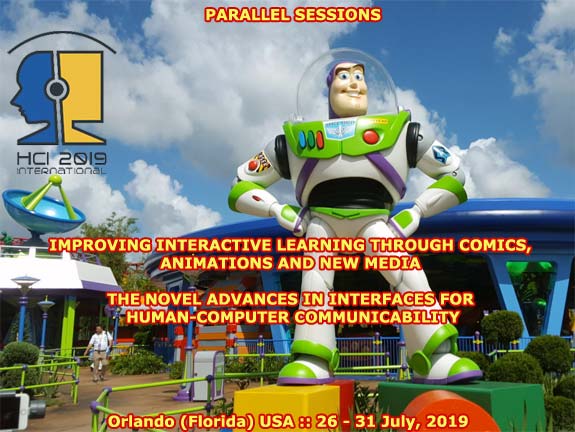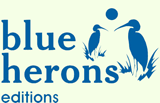Parallel Sessions
Improving Interactive Learning through Comics, Animations and New Media
The Novel Advances in Interfaces for Human-Computer Communicability
Being organized in the context of HCI International 2019 :: Orlando (Florida), USA
26 - 31 July 2019
HOME |
|
Introduction, Topics, Program, Deadlines, Program Committee, and Additional Notes 1. The Novel Advances in Interfaces for Human-Computer Communicability Introduction The use of mobile multimedia systems, especially in the context of telephony, has constituted a radical change in the communication process among human beings. That metamorphosis is irrespective of the place where they are at the moment of establishing the process of interactive communication, age, experience in the use of new technologies or training, among other variables. The rapid diffusion of new devices has generated a kind of democratization of the multimedia systems and has reduced the digital divide among broad sectors of the population. The monthly cost of the services of the latest generation of mobile telephony, such as the acquisition of these devices, continues to be the main factor in the expansion or reduction of this digital divide. To the economic component we must add the use-abuse relationship of these devices, depending on the age of the users. At present, it is easy to see how children between one and two years of age are already in contact with mobile telephony devices. It is an explorative or directed interaction guided / encouraged by their parents (babies) or companions (children and youngsters), so that they can activate dynamic media, such as: motion graphics, computer animation, video clips, special sound effects, music, etc. Other current and emerging themes and/or topics are also welcome, for example: :: Augmented Reality
2. Improving Interactive Learning Through Comics, Animations And New Media Introduction In education, the use of comics has been a strategic means to enhance and promote the teaching process, inside and outside the classroom, since the last century. In the new millennium, it is still a means of visual or iconic base, whose greatest attribute is simplicity, it is available to teachers, students, parents, etc., who do not require intermediaries or special devices for reading. This is so, that the didactic process is still considered a valid element, irrespective of whether it is digital or not. One evolution of the comic has been digitalization in 2D and/or 3D, going from the so-called traditional, small screen or television, to cinema and/or new media. The richness of the comic can be analyzed from the elaboration process, such as the incorporation of the elements of the historical context, the generation of the characters, the communication strategies (for example, the influence of the planes of the cinematographic cameras in the vignettes or cinema language, among many others. As a result of this wealth, it continues to be used in the brochures that explain processes such as the assembly and use of industrial machinery, the supply and prevention of medicines, etc. This form of communication is not synonymous with entertainment, on the contrary, it is still a sector of the publishing industry, which is in constant growth, in several countries of the EU, Japan, USA, etc.
The following are some of the main themes of this section. Other areas, topics, or subtopics of current relevance, provided their originality and impact, are welcome and possible for inclusion. Finally, a brief list of other potential areas and subtopics of interest: :: 2D and 3D Computer Animation All contributions –papers, demos and posters, should be of high quality, originality, clarity, significance and impact. In the current sessions are demonstrated a correct integration and collaboration among professionals of formal and factual sciences.Finally, all submitted research works will be reviewed in double-blind (at least three reviewers), non-blind, and participative peer review. These three kinds of review will support the selection process of those that will be accepted for their presentation at the parallel sessions. Authors of accepted works who registered in the conference can have access to the evaluations and possible feedback provided by the reviewers who recommended the acceptance of their contributions, so they can improve the final version of their works accordingly. Best regards, Francisco V. Cipolla Ficarra (Chair - coordinator) AINCI: Asociación Internacional de la Comunicación Interactiva –International Association of Interactive Communication (www.ainci.net), and ALAIPO: Asociación Latina Interacción Persona-Ordenador Latin Association of HCI (www.alaipo.net). Email: info@ainci.com :: info@alaipo.com
2. Program [ July 26 - 31 ] Final Remarks: The two main works, that is, "Improving Interactive Learning through Comics, Animations and New Media" and "The Novel Advances in Interfaces for Human-Computer Communicability", will be published in Blue Herons editions (specialised publishing house in scientific divulgation and born to promote freedom, dignity and equality among human beings), with ISBN, DOI, and international indexation. Format: "Long chapters". Colection: "Pixels". Handbook: "Examining New Points of View in Web Engineering, Visual Interfaces, Motion Graphics and Human-Computer Communicability." In addition, after the publication both chapters can be viewed free online, through German "ResearchGate" Website (www.researchgate.net). The rest of the contributions in our sessions, as it is almost usual that happens to us due to the distractions of their authors, for example, will be scattered in other areas of the final program. Fetch A. Kratky, University of Southern California (USA), in the final program, for an adittional orientation. See program in HCI International 2019
3. The parallel sessions have the following deadlines:
More information: info@ainci.com See extended deadlnes in HCI International 2019
4. Program Committee: Francisco V. C. Ficarra (chair :: coordinator) Demo Session and Poster Session: Andreas Kratky. University of Southern California (USA), Annamaria Poli. University of Milano Bicocca (Italy), Amanda Rivera (University of Puerto Rico), Claudia Rébola. University of Cincinnati (USA), Claudio Germak. Polytechnic University of Turin (Italy), Danny Barrantes. University of Costa Rica (Costa Rica), Miguel C. Ficarra (AInCI and ALAIPO), Jeff Williams. National University of Córdoba (Argentina), Kaoru Sumi. Future University Hakodate (Japan), and Sebastián Gabo. National University of Córdoba (Argentina). Scientific Committee: :: Alejandro Frangi. University of Leeds (UK)
5. Additional Notes PAPER SUBMISSION & PUBLICATION INTERNATIONAL REGISTRATION ACCOMMODATION All this information is here: HCI International 2019
Yours sincerely, Parallel Sessions Secretariat: [1] The Novel Advances in Interfaces for Human-Computer Communicability, and [2] Improving Interactive Learning through Comics, Animations and New Media. |
|
.


::. BOISE .::
Boise State University
USA
::. FUN .::
Future University Hakodate
Japan
::. KETTERING .::
Kettering University
USA
::. KNU .::
Kainan University
Taiwan
::. LEEDS .::
University of Leeds
UK
::. MSU .::
Moscow State University
Russia
::. NHU .::
Nanhua University
Taiwan
::. NUU .::
National United University
Taiwan
::. POLITO .::
Polytechnic University of Turin
Italy
::. SHEFFIELD .::
University of Sheffield
UK
::. SSRU .::
Suan Sunandha Rajabhat University
Thailand
::. U-AIZU .::
University of Aizu
Japan
::. UBA .::
Universidad de Buenos Aires
Argentina
::. UC .::
University of Cincinnati
USA
::. UCR .::
Universidad de Costa Rica
Costa Rica
::. UIOWA .::
University of Iowa
USA
::. ULB .::
Free University of Brussels
Belgium
::. UMD .::
University of Michigan-Dearborn
USA
::. UNC .::
Universidad Nacional de Córdoba
Argentina
::. UNED .::
Universidad Nacional de Educación a Distancia
Spain
::. UNIBO .::
University of Bolonia
Italy
::. UNIGE .::
University of Genoa
Italy
::. UNILJ .::
University of Ljubljana
Slovenia
::. UNIMIB .::
University of Milano–Bicocca
Italy
::. UNIST .::
University of Split
Croatia
::. UofO .::
University of Ottawa
Canada
::. UOI .::
University of Ioannina
Greece
::. UPR .::
Universidad de Puerto Rico
Puerto Rico
::. US .::
Universidad de Sevilla
Spain
::. USC .::
University of Southern California
USA
::. UTORONTO .::
University of Toronto
Canada
::. VMMI .::
Virtual Maastricht McLuhan Institute
the Netherlands
::. WASEDA .::
Waseda University
Japan
::. WSU .::
Wayne State University
USA
| © 1997 - 2019 AINCI & HCI Lab. | ||||
|---|---|---|---|---|






